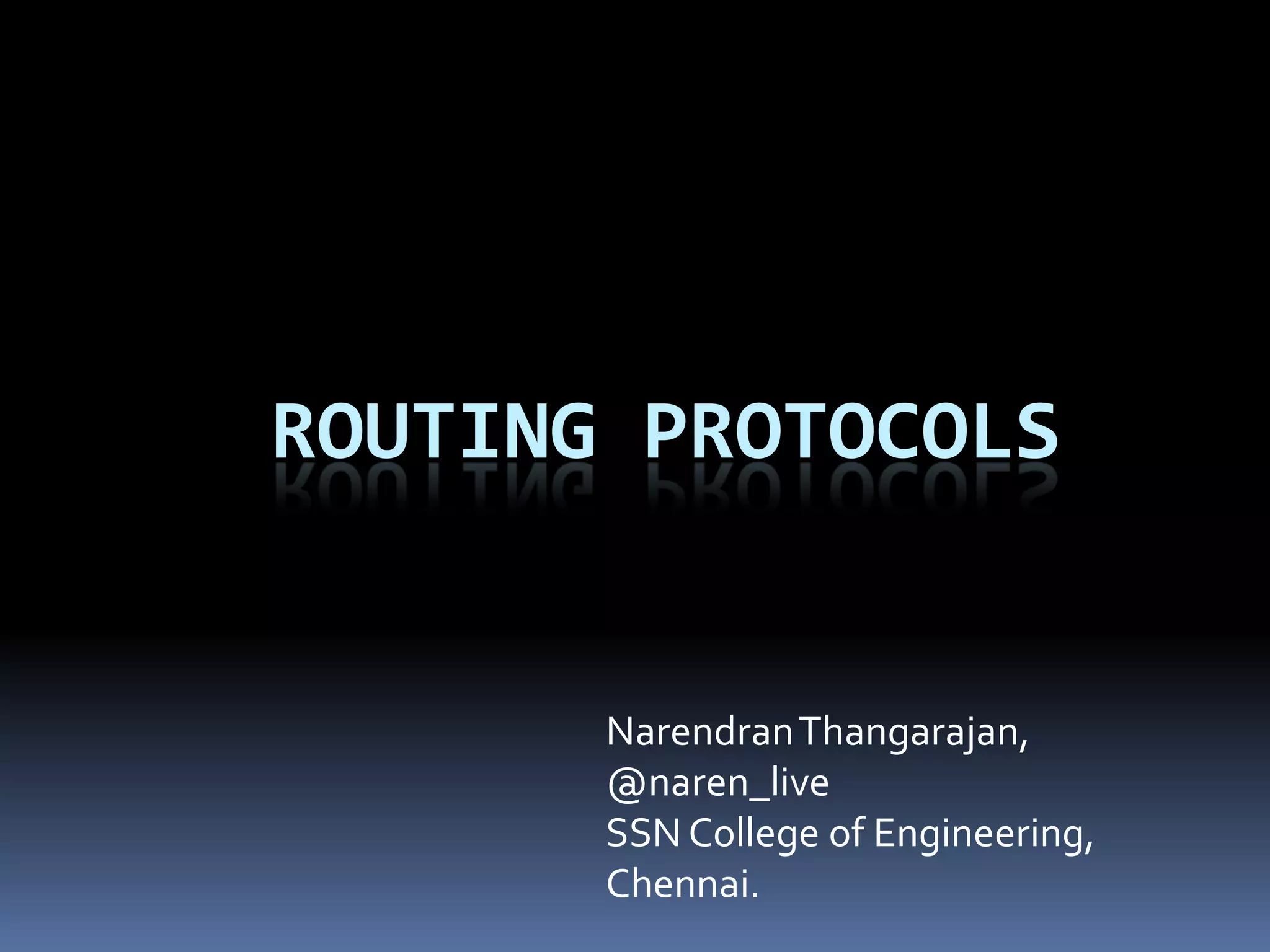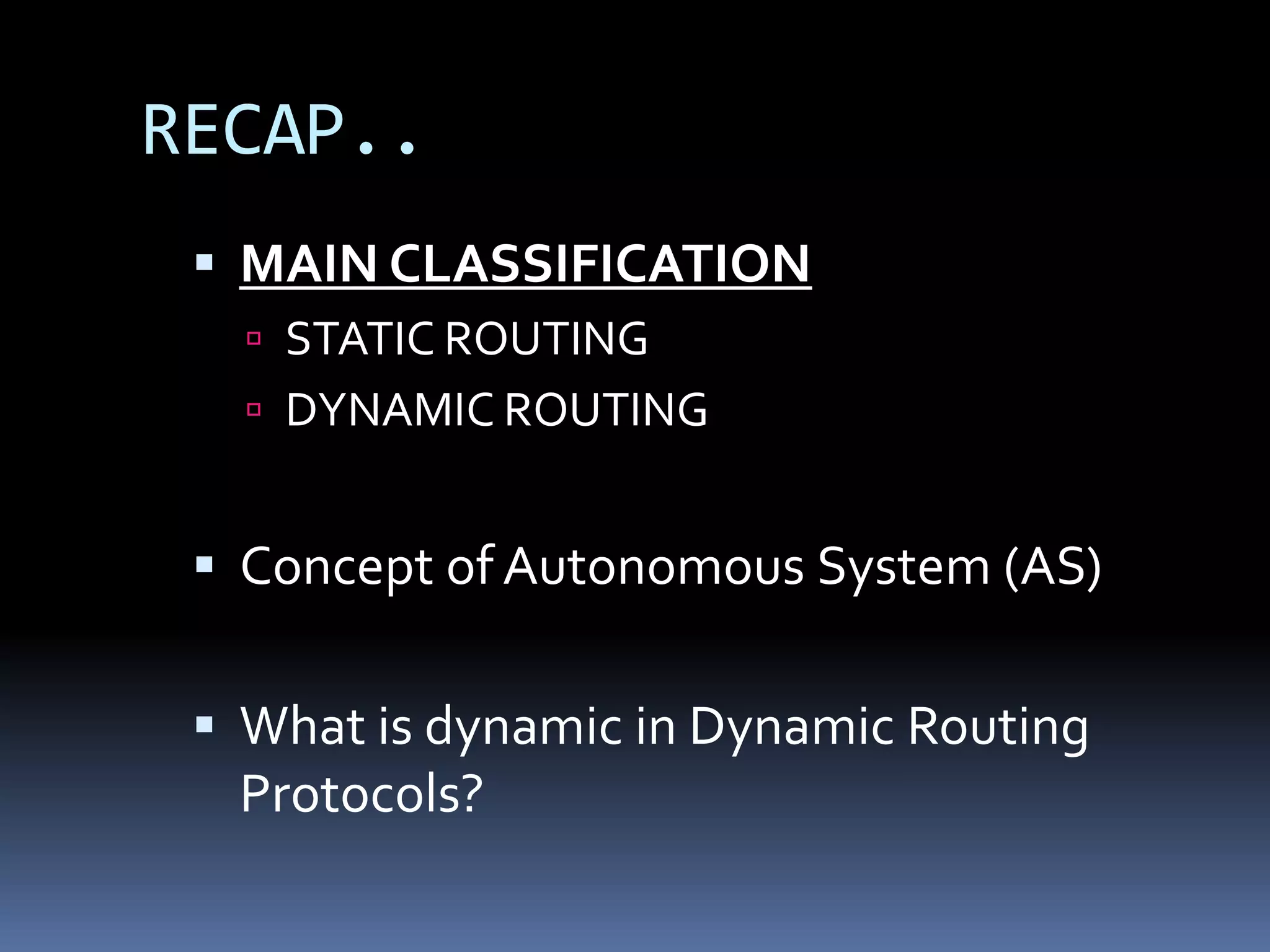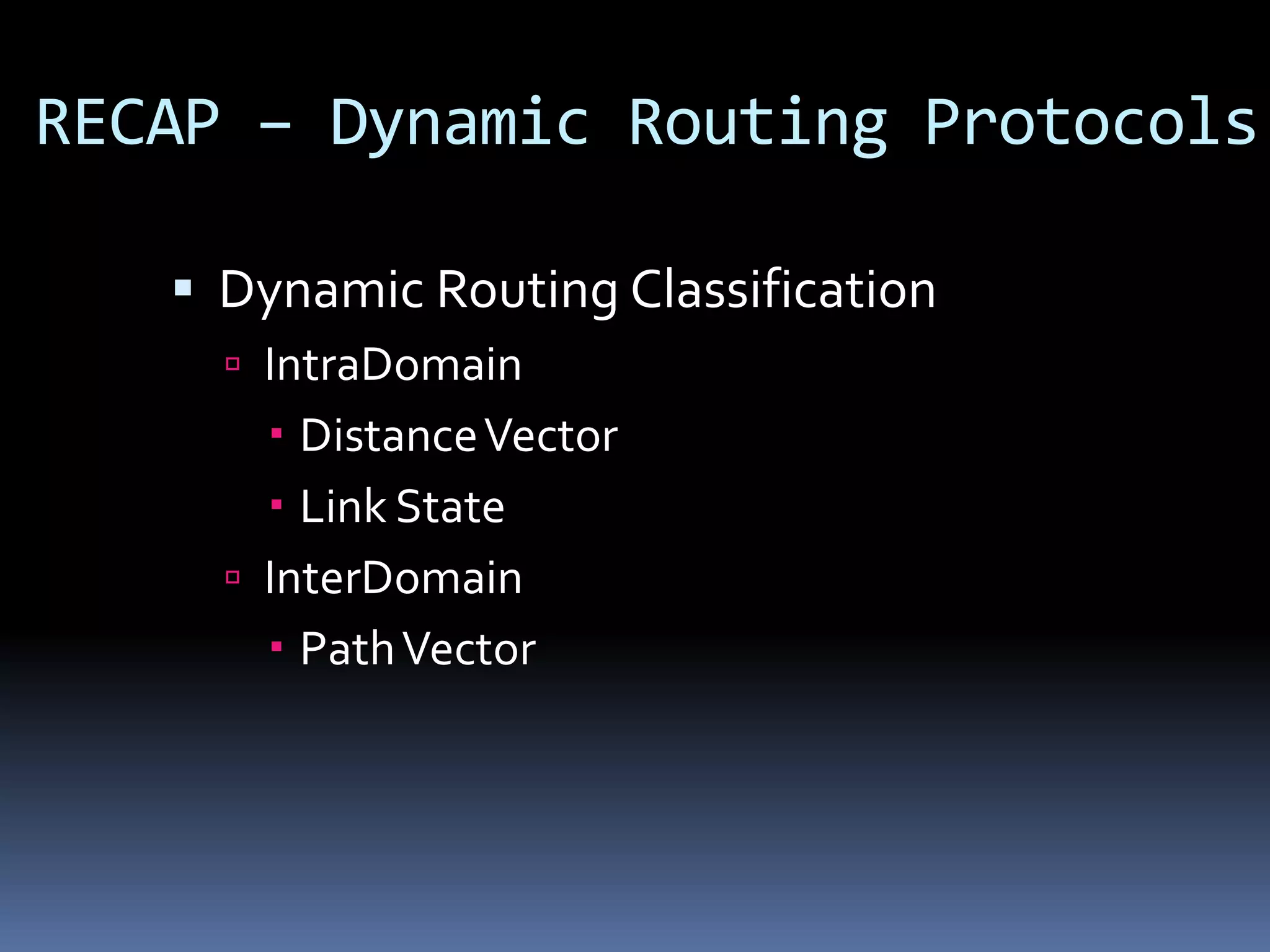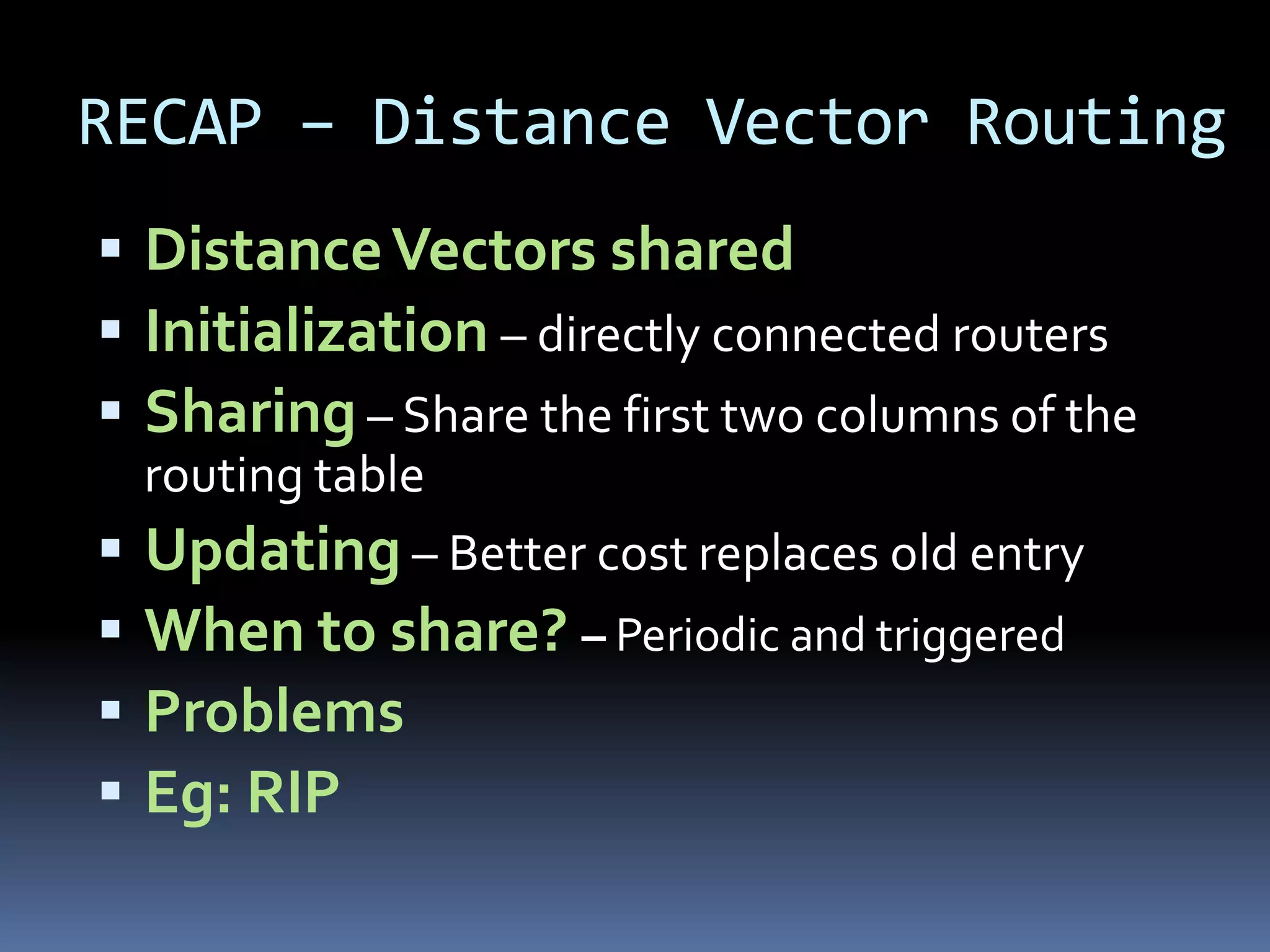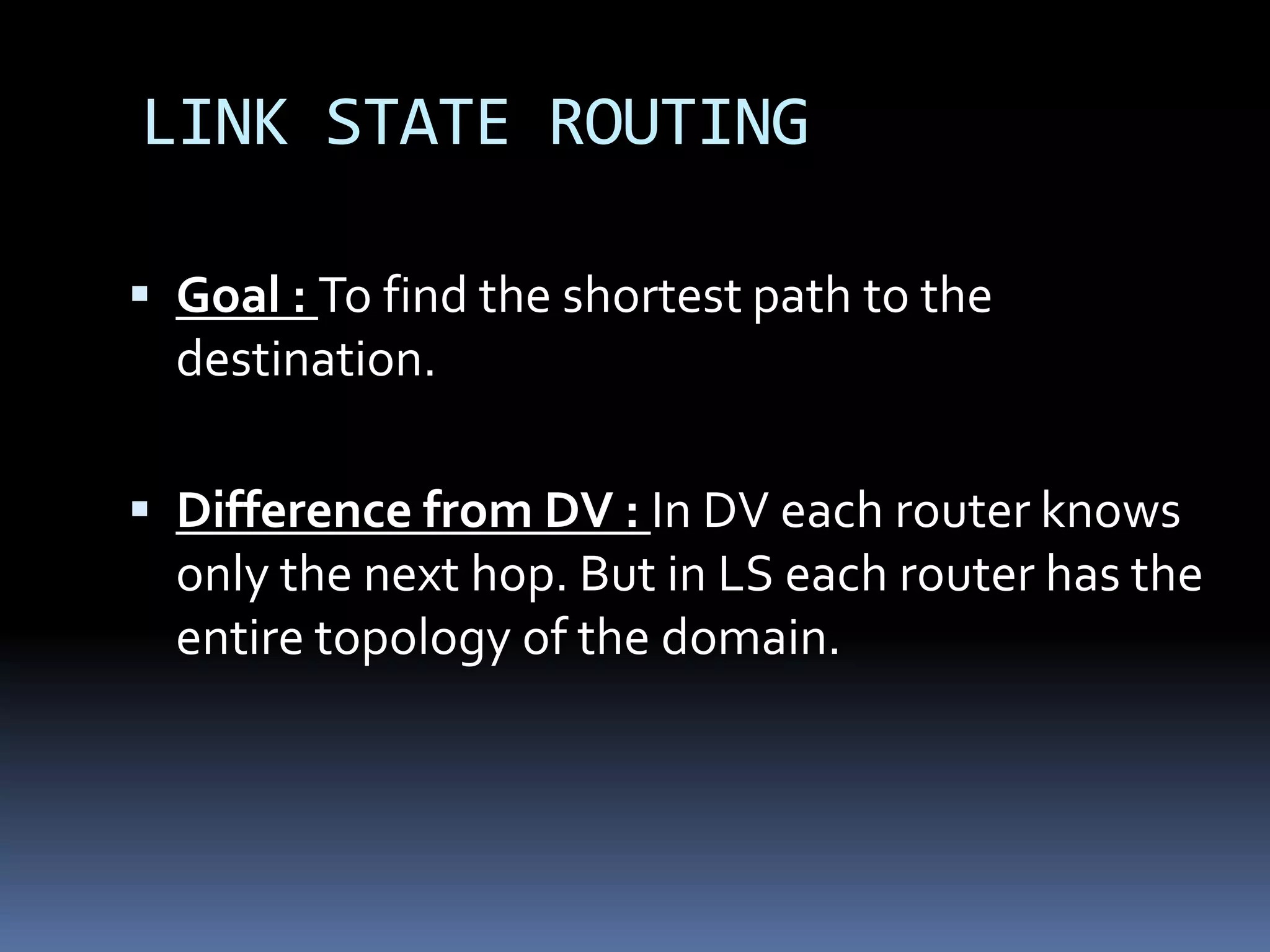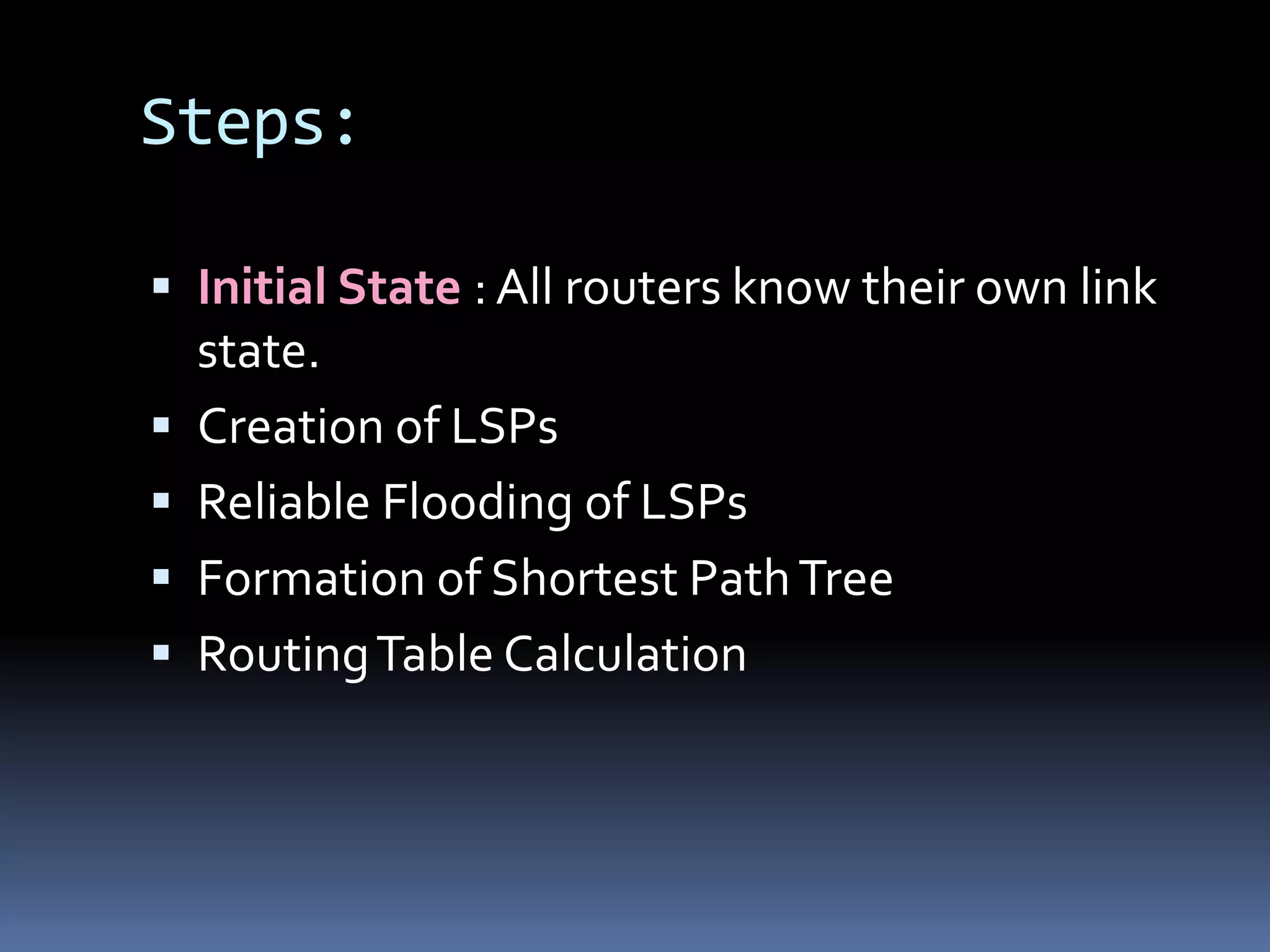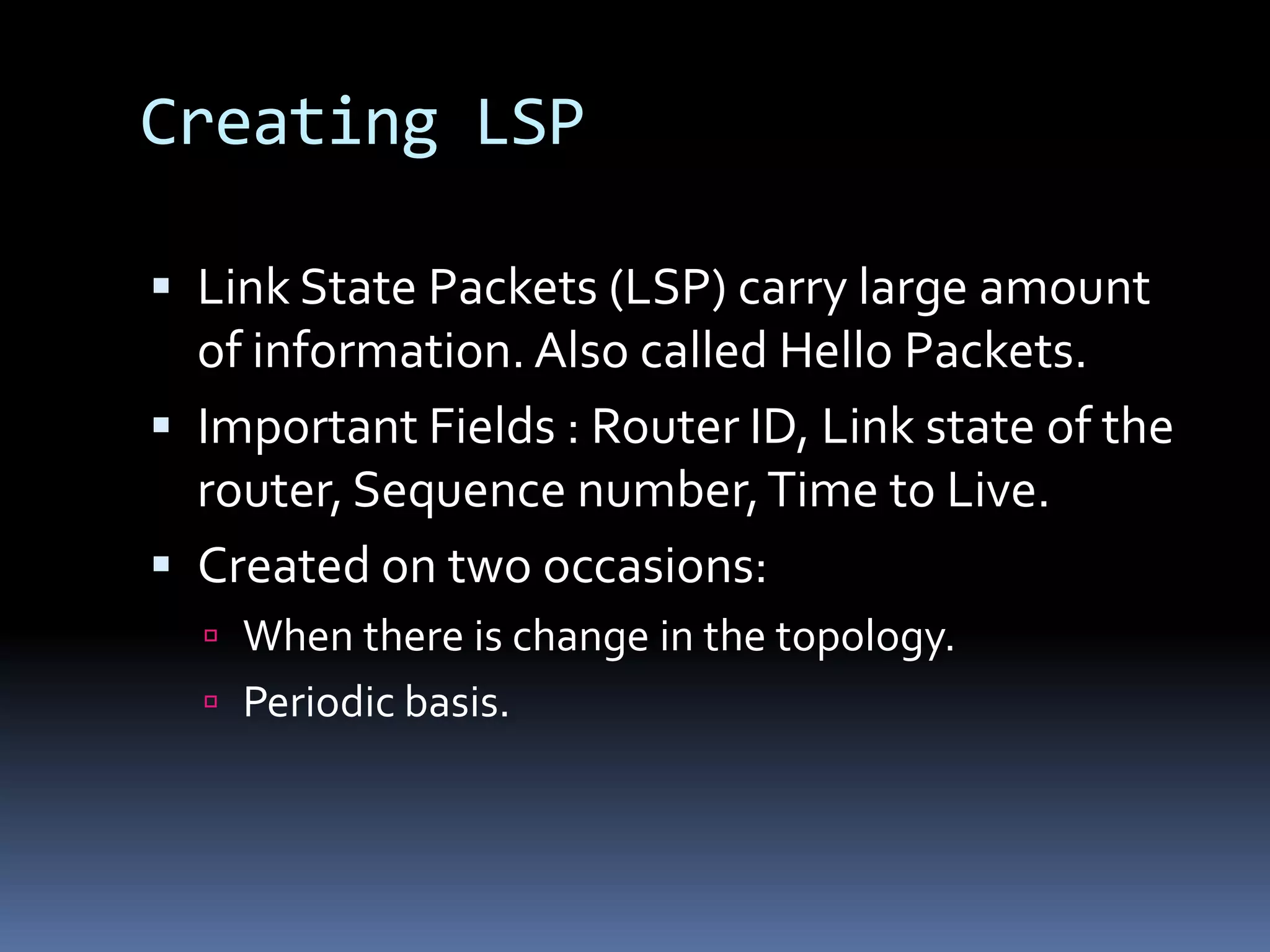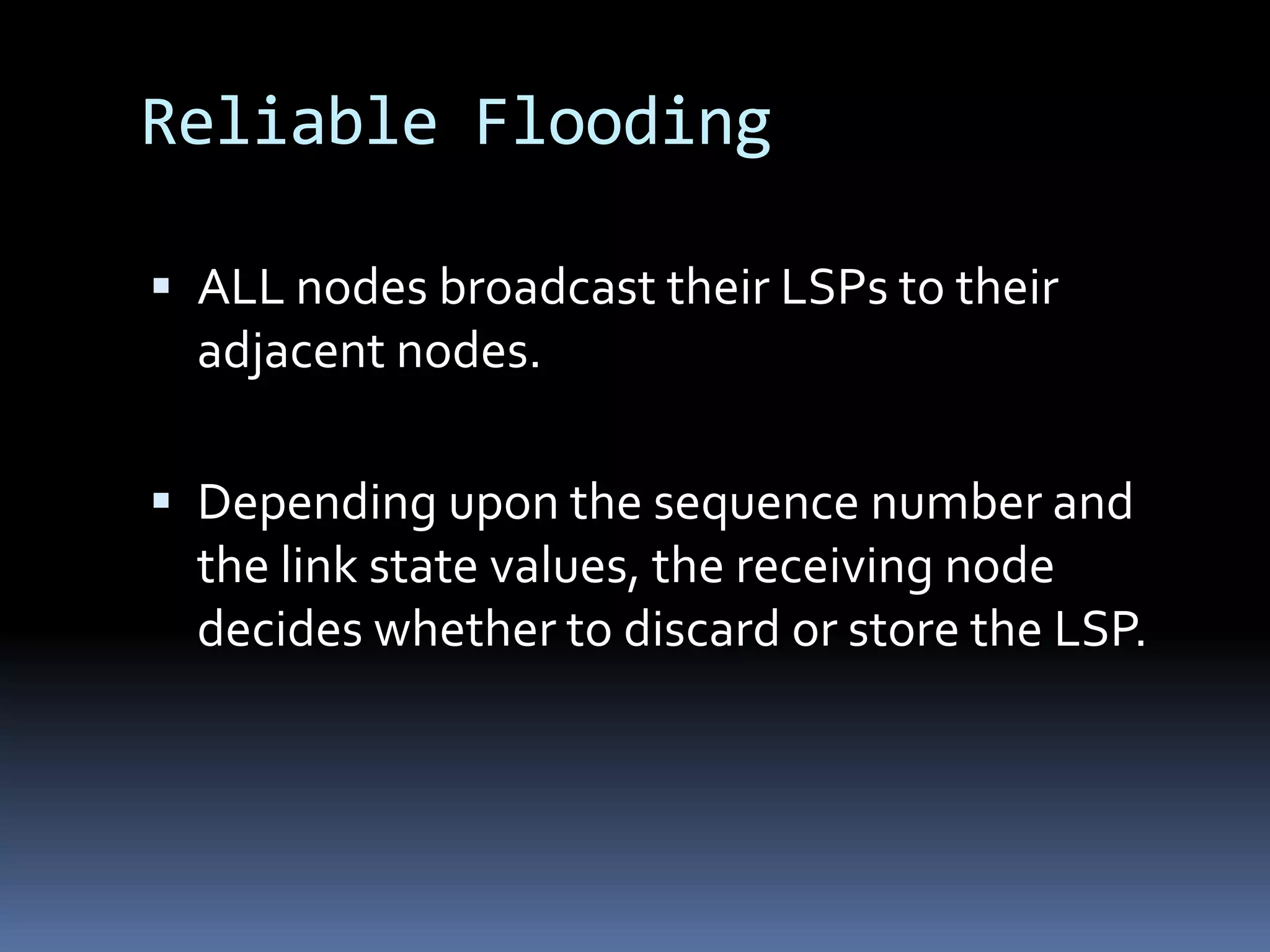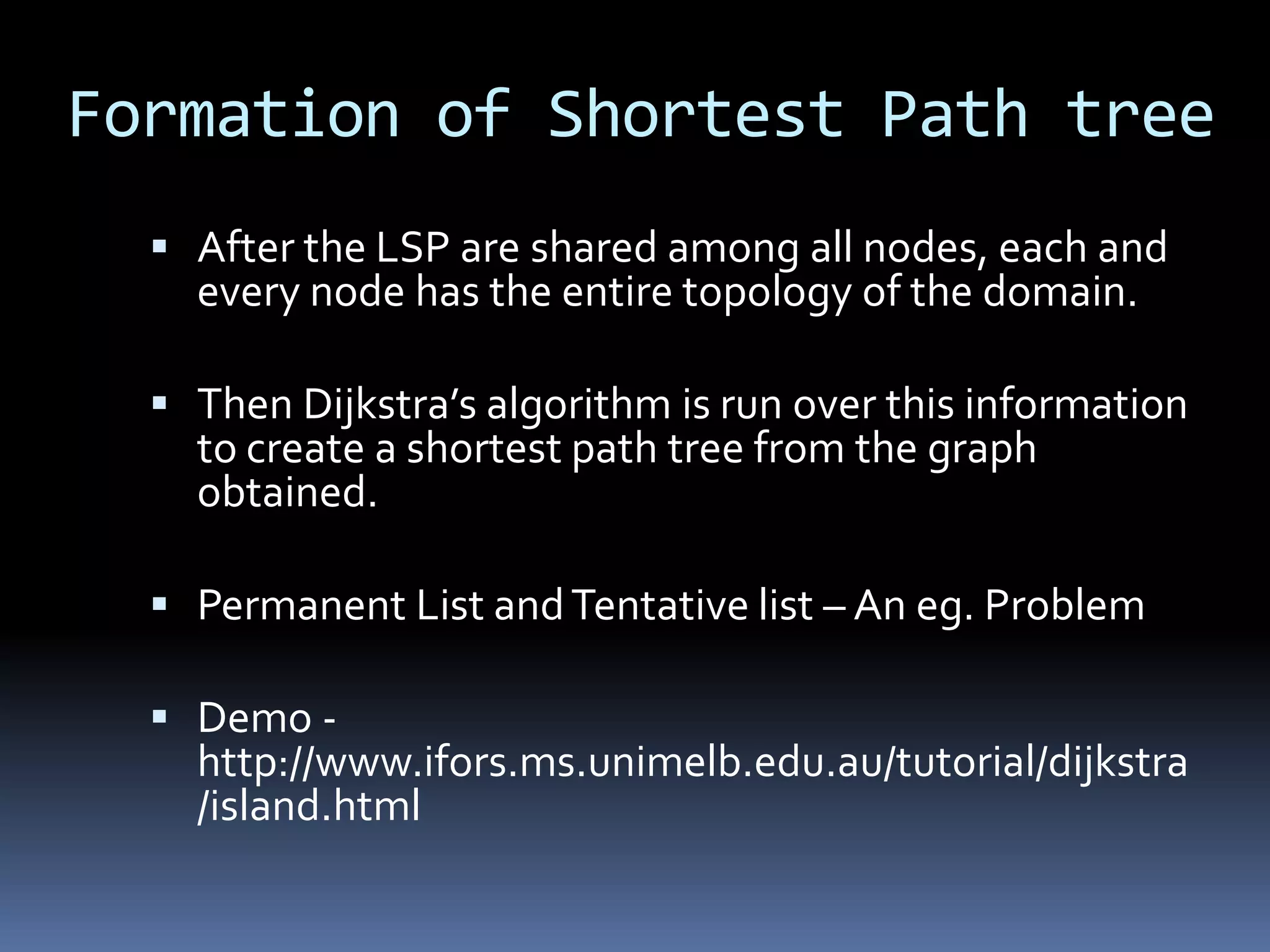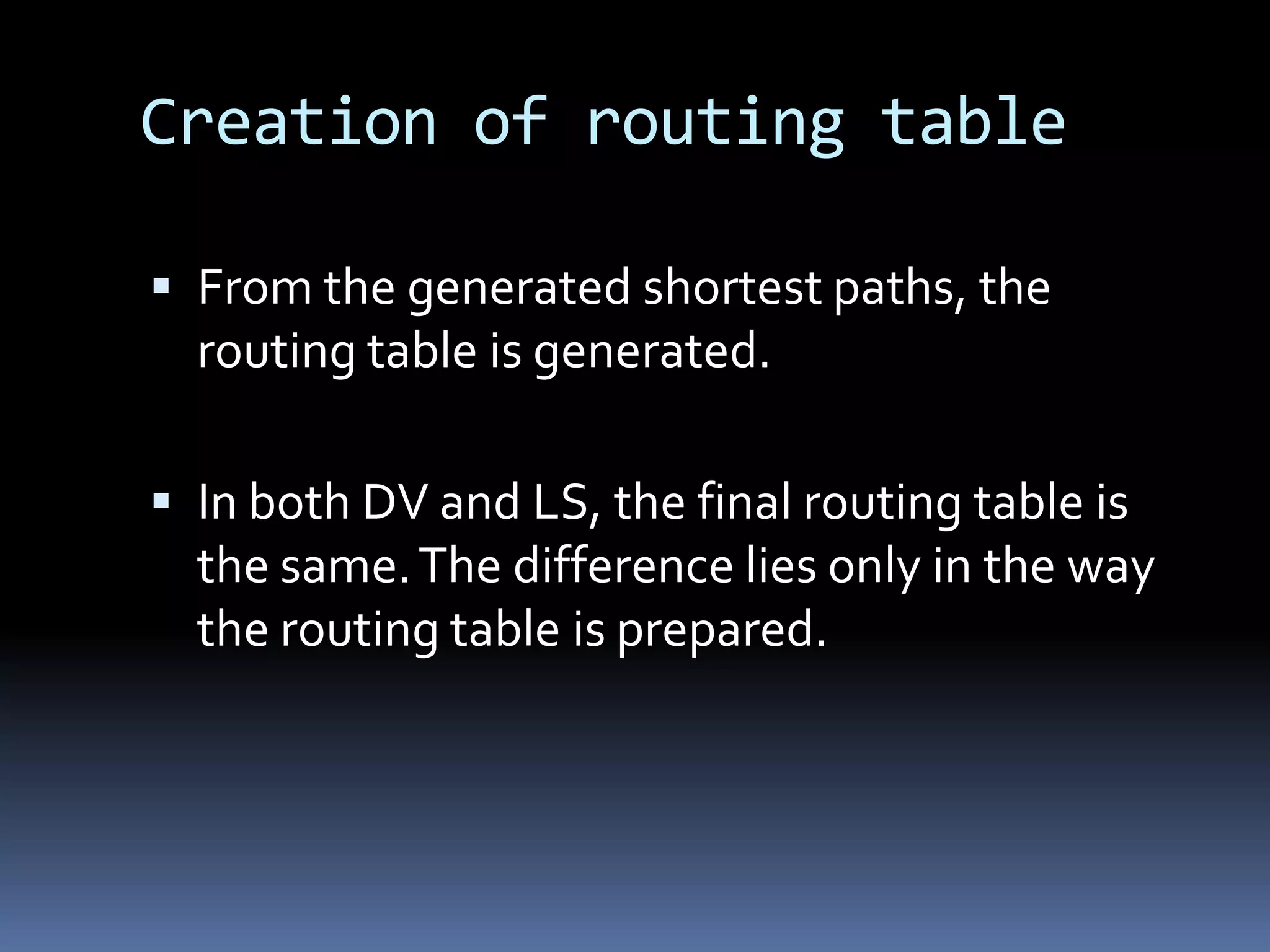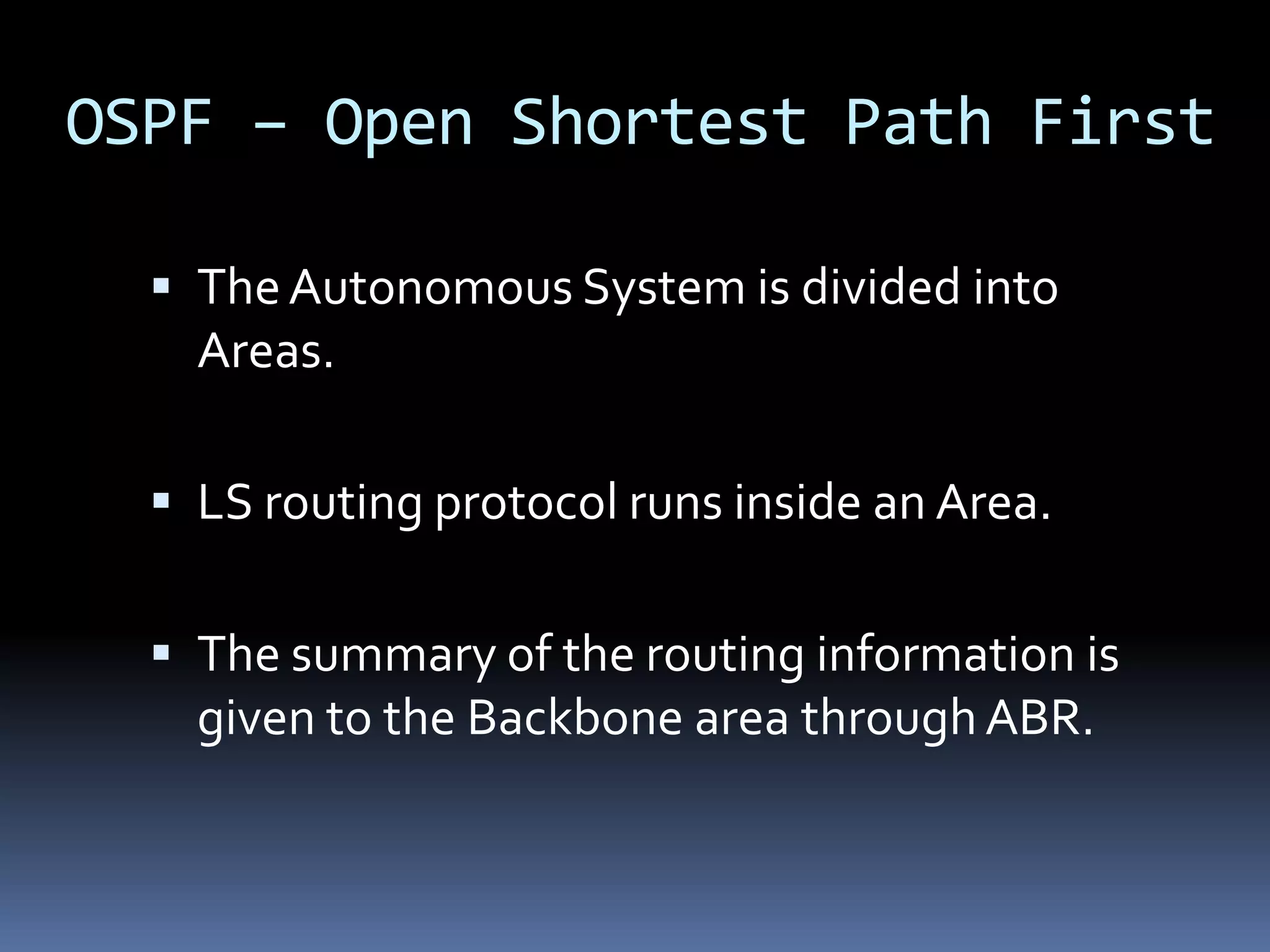This document summarizes routing protocols, including static and dynamic routing. It discusses key concepts like autonomous systems and how dynamic routing protocols work. Distance vector protocols share distance vectors between routers, while link state protocols have each router flood link state packets to share full topology information, which is then used to calculate the shortest path routing tables. Open Shortest Path First (OSPF) is presented as an example link state intra-domain routing protocol that divides routing areas and shares routing summaries between areas.
